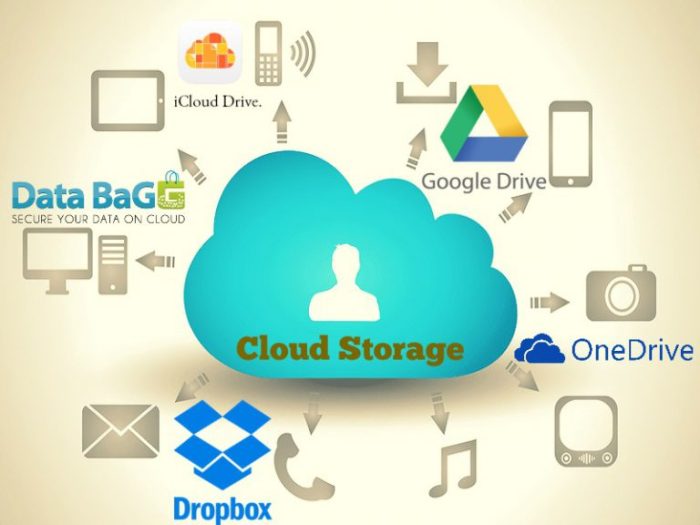How to Harness the Power of Cloud Storage for Data Backup: A Comprehensive Guide

In the ever-evolving digital landscape, data has become an invaluable asset for businesses and individuals alike. Safeguarding this data against loss or corruption is paramount, and cloud storage has emerged as a game-changer in the realm of data backup.
Cloud storage offers a plethora of advantages, including remote accessibility, enhanced security, and cost-effective scalability. By leveraging the cloud, you can ensure the continuity of your operations and minimize the risk of data loss due to hardware failures, natural disasters, or human error.
Overview of Cloud Storage for Data Backup
Cloud storage is a service that allows you to store your data on remote servers over the internet. This can be a great way to protect your data from loss or damage, as it is not dependent on local hardware or software.
There are many different types of cloud storage services available, each with its own features and benefits. Some of the most popular services include:
- Amazon S3
- Microsoft Azure Storage
- Google Cloud Storage
When choosing a cloud storage service, it is important to consider your specific needs. Some factors to consider include:
- The amount of storage you need
- The type of data you need to store
- The level of security you require
- The cost of the service
Choosing the Right Cloud Storage Provider
Selecting the optimal cloud storage provider requires careful consideration of several key factors. Security, reliability, and cost are paramount considerations when evaluating different providers.
Security
Data security should be a top priority. Ensure the provider adheres to industry-standard encryption protocols and employs robust authentication mechanisms to safeguard your data.
Reliability
The provider’s uptime and availability are crucial. Choose a provider with a proven track record of minimal downtime and reliable service, ensuring your data is accessible when you need it.
Cost
Consider the pricing structure of the provider. Compare storage capacity, bandwidth, and additional features to determine the provider that offers the best value for your needs.
Configuring and Using Cloud Storage for Backup
Setting up cloud storage for data backup is a crucial step in protecting your valuable information. Here’s a step-by-step guide to help you get started:
Step 1: Create a Cloud Storage Bucket
Create a cloud storage bucket to store your backup data. A bucket is a logical container that holds your objects (files) in the cloud. Choose a unique name for your bucket and select the appropriate storage class and location.
Step 2: Configure Backup Software
Install and configure backup software on your computer or server. This software will interact with the cloud storage bucket to upload and manage your backups.
Step 3: Create a Backup Plan
Establish a backup plan that defines the frequency, retention period, and scope of your backups. Determine how often you want to back up your data, how long you want to keep the backups, and which files and folders you want to include.
Step 4: Schedule Automatic Backups
Configure your backup software to perform automatic backups based on your backup plan. This ensures that your data is backed up regularly without manual intervention.
Step 5: Monitor and Verify Backups
Monitor your backups regularly to ensure they are running successfully. Verify that your backups are complete and accessible by restoring a test file or folder.
Best Practices for Configuring Backup Settings and Schedules
- Use incremental backups: Only upload changes to your cloud storage bucket, reducing bandwidth usage and storage costs.
- Set appropriate retention periods: Keep backups for as long as necessary to meet your recovery requirements, but avoid storing unnecessary data.
- Consider versioning: Enable object versioning in your bucket to retain multiple versions of your files, allowing you to recover previous versions in case of accidental modifications or deletions.
- Use encryption: Encrypt your backups to protect sensitive data from unauthorized access.
- Test your backups: Regularly restore a test file or folder to verify that your backups are working as intended.
Managing and Restoring Backups

Maintaining and monitoring cloud backups is crucial for ensuring the integrity and accessibility of your data. Cloud storage providers typically offer tools and dashboards to help you manage your backups, including features like:
- Backup scheduling: Set up automated backups to run at specific intervals or on-demand.
- Backup monitoring: Receive notifications and alerts for backup failures or completion.
- Versioning: Keep multiple versions of your backups to protect against accidental deletions or data corruption.
- Retention policies: Define how long backups should be retained to comply with regulations or internal policies.
Restoring Data from Cloud Storage
In the event of data loss, you can restore your data from cloud storage using the following steps:
- Identify the backup you want to restore from.
- Select the specific files or folders you need to recover.
- Choose the restore destination (e.g., your local computer, a different cloud storage account).
- Initiate the restore process and monitor its progress.
Restoring data from cloud storage is typically a straightforward process, but the specific steps may vary depending on the provider you are using. Refer to the documentation or support resources provided by your cloud storage provider for detailed instructions.
Security Considerations
Data stored in the cloud requires robust security measures to prevent unauthorized access and ensure its confidentiality, integrity, and availability.
Cloud storage providers implement various security protocols to protect user data, including:
Encryption Methods
Encryption plays a crucial role in safeguarding data stored in the cloud. Data is encrypted at rest (when stored on the cloud servers) and in transit (when transferred between the user’s device and the cloud).
- Encryption at rest ensures that data remains inaccessible to unauthorized individuals even if the cloud servers are compromised.
- Encryption in transit protects data from interception during transmission.
Access Control Mechanisms
Access control mechanisms restrict who can access and manipulate data stored in the cloud.
- Authentication mechanisms verify the identity of users attempting to access the cloud storage.
- Authorization mechanisms determine the level of access that authenticated users have to specific data or resources.
- Role-based access control (RBAC) assigns permissions to users based on their roles within the organization.
Cost Optimization
Optimizing costs associated with cloud storage for data backup is crucial for businesses. By implementing effective strategies, organizations can minimize expenses while maintaining data protection.
One key approach is to leverage tiered storage. This involves classifying data based on its importance and frequency of access. Frequently accessed data can be stored on higher-performance, more expensive storage tiers, while less critical data can be stored on lower-cost tiers.
Data Archiving
Data archiving is another cost-saving technique. By moving inactive data to lower-cost storage options, businesses can significantly reduce their storage expenses. Cloud storage providers typically offer archiving services that enable organizations to store data for extended periods at reduced costs.
Case Studies and Examples

Businesses worldwide have embraced cloud storage for data backup, reaping its benefits and overcoming challenges. Here are a few notable examples:
Example 1: Global Healthcare Organization
- Challenge: Managing and securing massive amounts of patient data across multiple locations.
- Solution: Implemented a cloud-based backup solution, centralizing data storage and enhancing data protection.
- Benefits: Improved data accessibility, enhanced security, and reduced IT costs.
Example 2: E-commerce Retailer
- Challenge: Safeguarding customer data and ensuring business continuity during peak shopping seasons.
- Solution: Utilized cloud storage for automated data backups, ensuring data recovery in case of system failures.
li> Benefits: Reduced downtime, improved customer trust, and increased operational efficiency.
Example 3: Educational Institution
- Challenge: Preserving and sharing large research datasets securely.
- Solution: Adopted cloud storage for data backup and collaboration, enabling researchers to access and share data globally.
- Benefits: Enhanced research productivity, increased data accessibility, and improved data security.
These examples highlight the versatility and effectiveness of cloud storage for data backup, addressing various challenges and providing numerous benefits across different industries.
Future Trends in Cloud Storage for Data Backup
The cloud storage industry is constantly evolving, with new technologies and trends emerging all the time. These trends are having a major impact on the way that businesses use cloud storage for data backup.One of the most important trends is the increasing adoption of object storage.
Object storage is a type of cloud storage that is designed to store large amounts of unstructured data, such as images, videos, and audio files. Object storage is more cost-effective and scalable than traditional file storage, making it an ideal choice for data backup.Another
important trend is the development of new data protection technologies. These technologies, such as data deduplication and encryption, can help to improve the security and efficiency of data backups. Data deduplication can reduce the amount of storage space required for backups, while encryption can protect data from unauthorized access.The
increasing adoption of cloud storage for data backup is also leading to the development of new backup software solutions. These solutions are designed to make it easier for businesses to manage and restore their backups. Many of these solutions offer features such as automated backups, data encryption, and remote management.These
trends are having a major impact on the way that businesses use cloud storage for data backup. Businesses are now able to backup their data more cost-effectively, securely, and efficiently than ever before.
Emerging Technologies
Some of the emerging technologies that are expected to have a major impact on cloud storage for data backup include:
- Artificial intelligence (AI) can be used to automate many of the tasks associated with data backup, such as data identification, classification, and encryption.
- Blockchain technology can be used to create a secure and immutable record of data backups.
- Edge computing can be used to bring data backup closer to the source of data, reducing latency and improving performance.
These technologies are still in their early stages of development, but they have the potential to revolutionize the way that businesses use cloud storage for data backup.
Impact on Data Backup Practices
The emerging trends in cloud storage technology are having a major impact on data backup practices. Businesses are now able to:
- Backup their data more cost-effectively.
- Backup their data more securely.
- Backup their data more efficiently.
- Restore their data more quickly.
These trends are making cloud storage an increasingly attractive option for data backup. Businesses of all sizes are now able to take advantage of the benefits of cloud storage, including cost savings, scalability, and security.
Last Recap
In conclusion, cloud storage is an indispensable tool for data backup, providing businesses and individuals with a reliable, secure, and cost-effective solution to safeguard their critical information. By carefully selecting a provider, configuring your settings appropriately, and implementing robust security measures, you can harness the full potential of cloud storage and ensure the preservation of your data for years to come.









